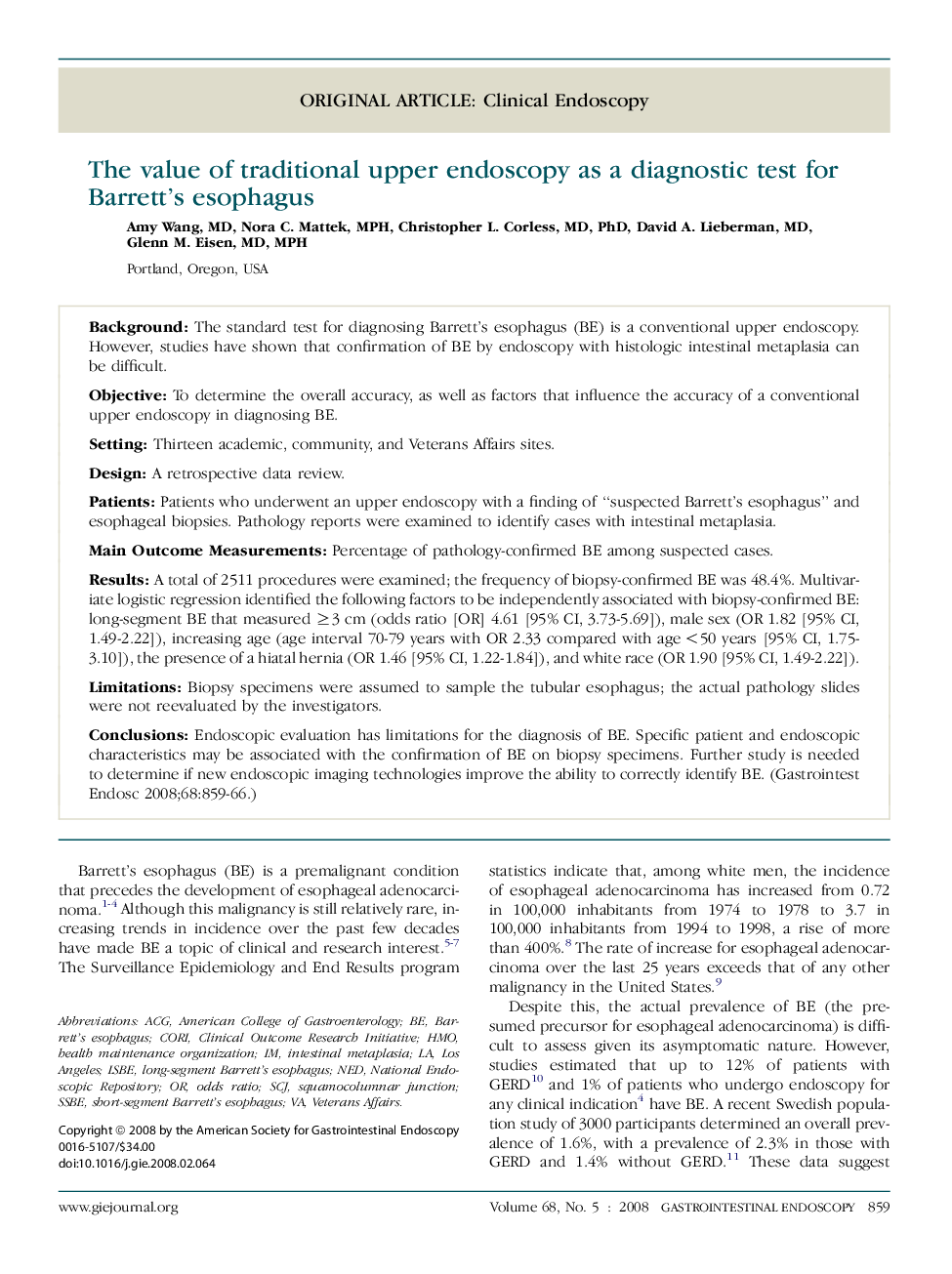| Article ID | Journal | Published Year | Pages | File Type |
|---|---|---|---|---|
| 3307162 | Gastrointestinal Endoscopy | 2008 | 8 Pages |
BackgroundThe standard test for diagnosing Barrett's esophagus (BE) is a conventional upper endoscopy. However, studies have shown that confirmation of BE by endoscopy with histologic intestinal metaplasia can be difficult.ObjectiveTo determine the overall accuracy, as well as factors that influence the accuracy of a conventional upper endoscopy in diagnosing BE.SettingThirteen academic, community, and Veterans Affairs sites.DesignA retrospective data review.PatientsPatients who underwent an upper endoscopy with a finding of “suspected Barrett's esophagus” and esophageal biopsies. Pathology reports were examined to identify cases with intestinal metaplasia.Main Outcome MeasurementsPercentage of pathology-confirmed BE among suspected cases.ResultsA total of 2511 procedures were examined; the frequency of biopsy-confirmed BE was 48.4%. Multivariate logistic regression identified the following factors to be independently associated with biopsy-confirmed BE: long-segment BE that measured ≥3 cm (odds ratio [OR] 4.61 [95% CI, 3.73-5.69]), male sex (OR 1.82 [95% CI, 1.49-2.22]), increasing age (age interval 70-79 years with OR 2.33 compared with age <50 years [95% CI, 1.75-3.10]), the presence of a hiatal hernia (OR 1.46 [95% CI, 1.22-1.84]), and white race (OR 1.90 [95% CI, 1.49-2.22]).LimitationsBiopsy specimens were assumed to sample the tubular esophagus; the actual pathology slides were not reevaluated by the investigators.ConclusionsEndoscopic evaluation has limitations for the diagnosis of BE. Specific patient and endoscopic characteristics may be associated with the confirmation of BE on biopsy specimens. Further study is needed to determine if new endoscopic imaging technologies improve the ability to correctly identify BE.
